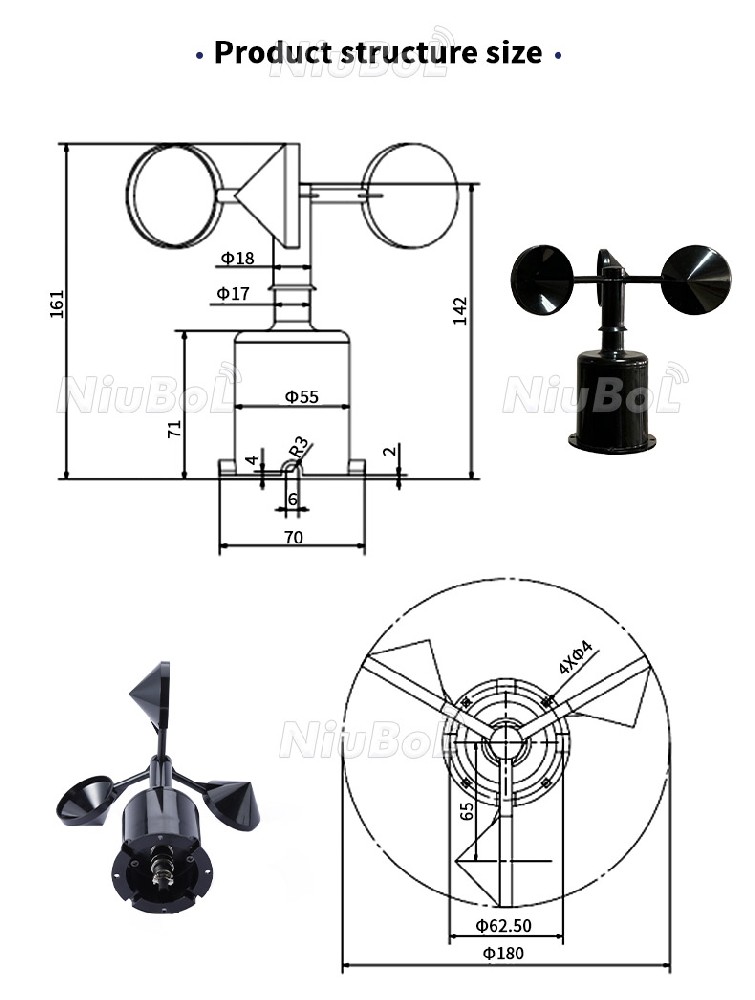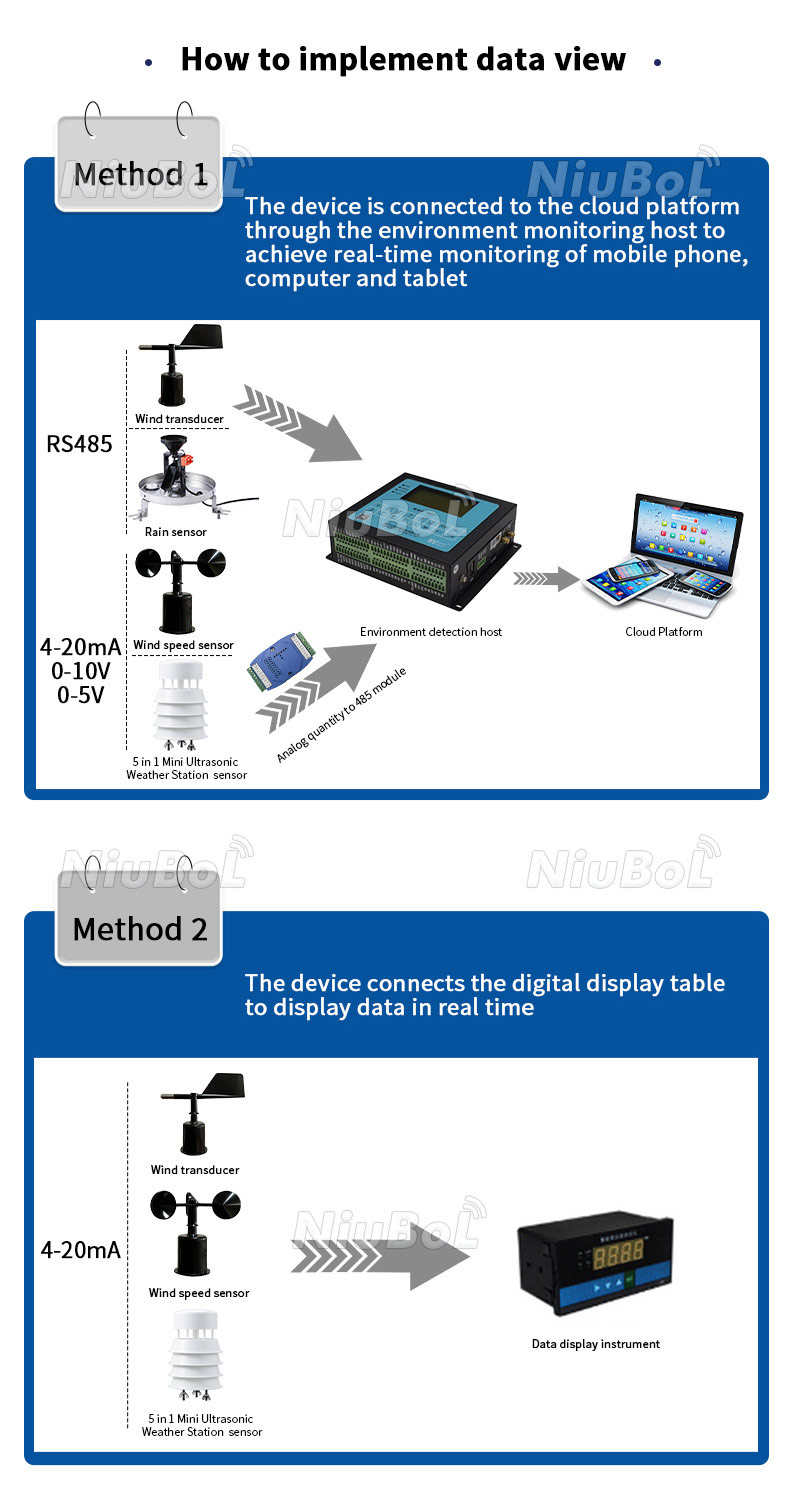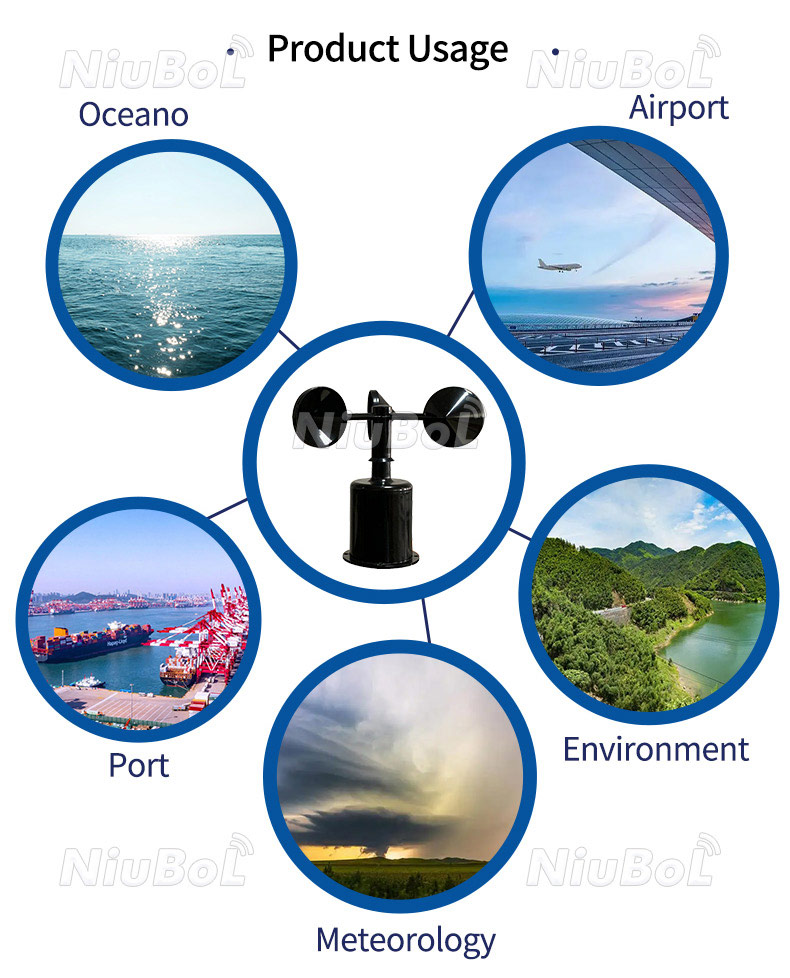

— Blogs —
—Products—
 Consumer hotline +8618073152920
Consumer hotline +8618073152920 WhatsApp:+8615367865107
Address:Room 102, District D, Houhu Industrial Park, Yuelu District, Changsha City, Hunan Province, China
Product knowledge
Time:2024-02-26 21:26:07 Popularity:2645
A cup anemometer is a type of anemometer, a device used to measure wind speed. It uses a cup attached to a rotating shaft to measure wind speed. Here are some of the advantages and disadvantages of using a cup anemometer:
1. Simplicity: The design and construction of cup anemometers are relatively simple and easy to manufacture and maintain.
2. Cost-effective: Due to their simple design, cup anemometers are usually more economical than other types of anemometers.
3. Rugged: Cup anemometers are generally durable and can withstand harsh weather conditions, including strong winds and freezing temperatures.
4. Easy to Calibrate: Cup anemometers are easy to calibrate to ensure the accuracy of wind speed measurements.
5. Wide range of applications: Commonly used in many fields such as meteorology, wind energy and environmental monitoring.


1. Direction sensitivity: Cup anemometers do not provide wind direction information. Additional equipment, such as a wind vane, is required to measure the direction of the wind. 2.
2. Accuracy: While cup anemometers are reliable, their accuracy may not be comparable to more advanced anemometers, such as hot-wire anemometers.
3. Airflow Interference: The presence of an anemometer cup can sometimes interfere with airflow, causing the measured wind speed to be slightly higher than the actual wind speed in the surrounding environment.
4. Outdoor applications only: Cup anemometers are designed primarily for outdoor use and may not be as effective or suitable for indoor applications due to different airflow patterns and potential interference from surrounding objects.
5. Friction effects: Friction between the moving parts of a cup anemometer can lead to measurement errors, especially at low wind speeds, which can affect the accuracy of the measurement.
6. Calibration requirements: Cup anemometers may require periodic calibration to ensure accuracy, which may increase maintenance costs.

Overall, cup anemometers are a widely used and reliable instrument for measuring wind speed, and despite these drawbacks, cup anemometers remain a popular choice for many applications due to their simplicity of operation, cost-effectiveness and ability to provide reliable wind speed measurements in a wide range of conditions.
Weather-Stations-Catalog-NiuBoL-2024.pdf
Related recommendations
Sensors & Weather Stations Catalog
Agriculture Sensors and Weather Stations Catalog-NiuBoL.pdf
Weather Stations Catalog-NiuBoL.pdf
Related products
 Combined air temperature and relative humidity sensor
Combined air temperature and relative humidity sensor Soil Moisture Temperature sensor for irrigation
Soil Moisture Temperature sensor for irrigation Soil pH sensor RS485 soil Testing instrument soil ph meter for agriculture
Soil pH sensor RS485 soil Testing instrument soil ph meter for agriculture Wind Speed sensor Output Modbus/RS485/Analog/0-5V/4-20mA
Wind Speed sensor Output Modbus/RS485/Analog/0-5V/4-20mA Tipping bucket rain gauge for weather monitoring auto rainfall sensor RS485/Outdoor/stainless steel
Tipping bucket rain gauge for weather monitoring auto rainfall sensor RS485/Outdoor/stainless steel Pyranometer Solar Radiation Sensor 4-20mA/RS485
Pyranometer Solar Radiation Sensor 4-20mA/RS485
Screenshot, WhatsApp to identify the QR code
WhatsApp number:+8615367865107
(Click on WhatsApp to copy and add friends)
